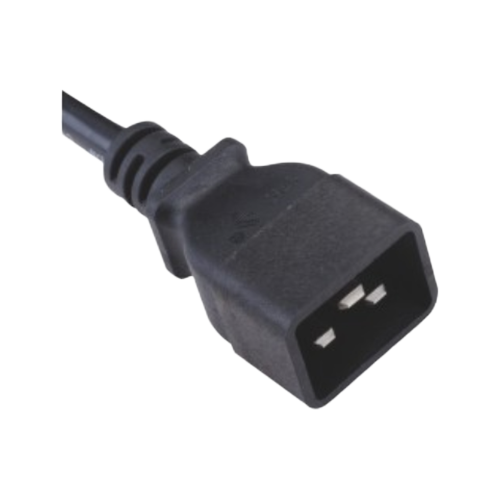Environmental conditions, such as temperature and humidity, can significantly impact the performance and longevity of an IEC standard power cord:
Extreme temperatures, whether hot or cold, can have detrimental effects on the materials used in the construction of an IEC standard power cord. In high temperatures, typically above the recommended operating range specified by the manufacturer, the insulation surrounding the conductors may degrade more rapidly. This degradation can lead to a breakdown in the insulation's dielectric properties, increasing the risk of electrical leakage, short circuits, or even insulation failure. Prolonged exposure to high temperatures can cause the jacketing material of the cord to become brittle, potentially leading to cracking or splitting, which compromises the cord's mechanical integrity and exposes the conductors. Conversely, in excessively cold temperatures, the flexibility of the cord's materials may decrease, making them more prone to cracking or fracturing when subjected to bending or flexing. This can not only impair the cord's usability but also increase the risk of electrical faults and safety hazards, especially in applications where the cord is moved or manipulated frequently.
Moisture infiltration is a significant concern in environments with high humidity levels, as it can compromise the insulation integrity and electrical properties of the power cord. When moisture penetrates the insulation, it can create pathways for current leakage or short circuits between the conductors, increasing the risk of electrical shocks or equipment damage. Moreover, prolonged exposure to high humidity or moisture-rich environments can accelerate the deterioration of the cord's materials, particularly if they are not designed to withstand such conditions. For example, the metal components, such as the plug and connectors, may corrode over time, leading to diminished electrical conductivity and potential safety hazards. Additionally, moisture absorption by the insulation or jacketing materials can alter their mechanical properties, affecting the cord's flexibility and resistance to physical damage. In severe cases, water ingress into the cord can result in catastrophic failures, including electrical fires or equipment malfunction.
Corrosive substances present in the environment can exacerbate the effects of humidity on the metal components of an IEC standard power cord. Corrosion occurs when these substances react with the metal surfaces, causing them to deteriorate and form oxides or other compounds that compromise their electrical conductivity and mechanical strength. Common sources of corrosion include saltwater, chemicals, and airborne pollutants. The corrosion process can weaken the plug and connectors, leading to poor electrical contact, increased resistance, and potential overheating during operation. Moreover, corrosion-induced damage may not be immediately apparent, making it essential to conduct regular inspections and maintenance to detect early signs of deterioration and prevent safety risks.
Temperature and humidity fluctuations can affect the flexibility and mechanical properties of the cord's insulation and jacketing materials. In high humidity environments, the materials may absorb moisture, which can soften them and make the cord more flexible. While this increased flexibility may initially seem beneficial, it can also make the cord more susceptible to damage from bending, twisting, or abrasion, particularly if the moisture content fluctuates over time. Conversely, in dry or low humidity conditions, the materials may become stiffer and less pliable, increasing the risk of cracking or breaking when subjected to mechanical stress. This loss of flexibility not only compromises the cord's usability but also reduces its resistance to physical damage and abrasion, increasing the likelihood of insulation breaches and electrical faults. Therefore, it's crucial to store and use the power cord in environments with stable temperature and humidity levels to minimize the risk of mechanical failure and ensure long-term reliability.



 English
English عربى
عربى











